Menu
You can manage your membership and billing method by clicking here
Terms of Service
Privacy Policy
Copyright © 2025 Office of Immigration Australia, a private company registered in Australia. All Rights Reserved.

Checking membership status...
 EXCLUSIVE MEMBERS ONLY ACCESS
EXCLUSIVE MEMBERS ONLY ACCESSTo access this month’s edition & Member’s only resources, enter your registered email address.



Exclusive Australian Immigration News, Updates & Opportunities
January 2024
This bulletin is for members only, and provides our members with month to month updates on Australian immigration policy changes and consequential opportunities. Opportunities are found via federal and state government policy shifts for the demand and supply for certain occupations.
This bulletin will keep you up to date so that you do not have to employ expensive immigration lawyers to provide you with monthly research.
January 2024 has arrived and a huge HAPPY NEW YEAR to all Australian Immigration Bulletin Members!!
With a strong lead up from 2023, the year 2024 is already off to a good start with skilled migration arrivals booming!
2023 has now proven to be the biggest year in Australian immigration history, and we expect that 2024 will be no different for ‘Skilled Migration’!!
In this months bulletin, Immigration Minister Andrew Giles has acknowledged that the lack of skilled workers continues to be one of the biggest economic challenges facing Australia. Home Affairs Minister Clare O’Neil declared that “we face the most challenging geostrategic circumstances in our region that we have seen in 70 years” and “migration will help us answer all of these challenges”!
In this month’s ‘Federal News‘, Australia’s population growth has rocketed back to the boom rates of the mid-1950s! New data released in December 2023 from the Australian Bureau of Statistics shows the country’s population grew by 2.4 per cent this year, welcoming a record 624,100 residents in the past 12 months! As a percentage of its population, Australia now has one of the highest rates of immigration in the democratic world!
Also in this months Federal News, we examine the new ‘Migration Strategy’, released in December 2023 by the Australian Government, which outlines major improvements to Australia’s migration system in order to meet the nation’s future demands and deliver for Australia—its people, businesses, governments, and migrants.
In this month’s ‘State News’, skilled workers residing offshore remain eligible to be considered for ALL State and Territory nominations! Please view the State Migration Section of this month’s bulletin for all State and Territory program updates and opportunities available!
In this month’s ‘Economic News’, the Federal Government’s new Migration Strategy is seen as a game changer by employers, workers and experts as business groups and the peak union body have welcomed the Migration Strategy, arguing the fast-tracking of visas for highly skilled workers will raise productivity growth!
In other economic news, top CEOs say Australia’s economy is on track for a soft landing with immigration bringing another year of economic growth!
In this month’s ‘Student News’, we examine the Government’s new Migration Strategy which also features several changes for international education including higher English language requirements, shorter post-study work rights, routes to new work visas, scrutiny of high-risk education providers, and a reform of the Genuine Temporary Entrant test for students!
All this and much more in the January issue of The Australian Immigration Bulletin! Let’s take a deeper look at what has happened so far and what is planned for the remainder of January 2024 in Australian Immigration, so that you can start planning!
All members now have FREE access to an online IELTS English Platform and course to practice, study and improve their English and IELTS score. The IELTS exam is one of the key recommended exams you will need to take in order to Apply for Skilled Migration to Australia and the better your results, the higher points you will get when submitting an expression of interest. The advanced English and IELTS platform will allow all members to practice Mock IELTS Exams, learn cutting edge tips and gain a greater understanding of how to achieve a Band 9+.
All members also have access to “ImmiConnect” which is now available in the member’s area. ImmiConnect is the Office of Immigration Australia’s Employer Sponsored program which allows overseas workers to receive job interview invitations from Australian employers, when job opportunities come available.
The program aims to bring globally mobile, highly-skilled and specialised individuals to Australia who can fill critical areas of need.
ImmiConnect is exclusive to active Australian Immigration Bulletin Members only. You must be a current Australian Immigration Bulletin Member to be eligible to receive job interview invitations.
So if you are interested in receiving these invitations, please sign up for FREE by Clicking “ImmiConnect” and adding your name and email address.

*2 WINNERS DRAWN EVERY MONTH:
Current round: October 2023 – February 2024 (10 winners/prizes in total)
There is always a winner, and the next one could be you!
The winners of the January 2024 Immigration Prize Giveaway were drawn at 10am AEST on 1st January 2024.
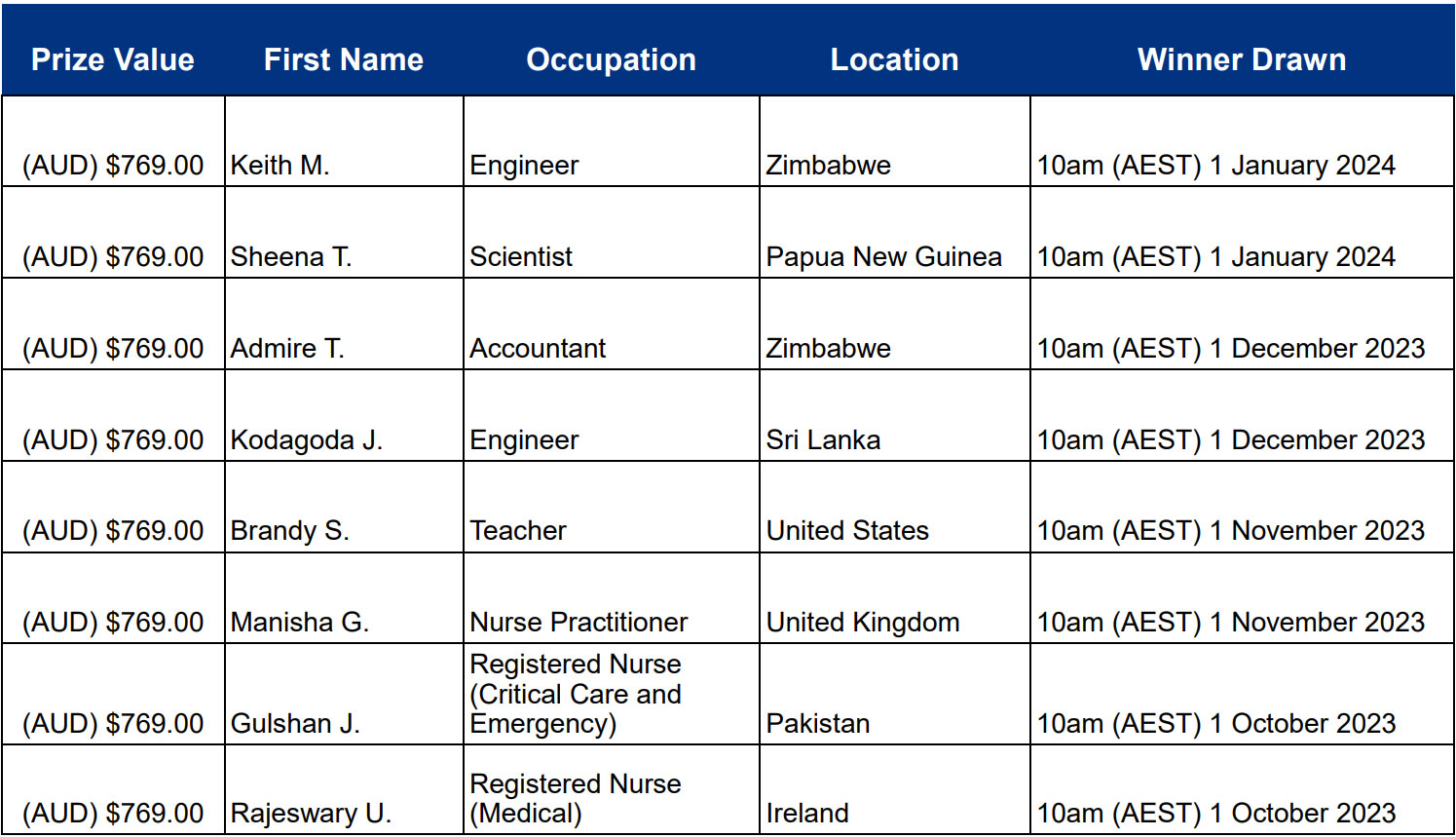
Congratulations to the January 2024 winners! You have been sent a confirmation email with details on how to claim your prize!
The next 2 lucky winners will be drawn at 10am AEST on 1st February 2024.
As of 6th July 2022, people entering Australia do NOT need to provide evidence of Covid-19 vaccination status. Additionally, people leaving Australia will NOT be asked to provide evidence of their vaccination status. Unvaccinated visa holders do NOT need a travel exemption to travel to Australia. It is however important to remember that airlines, vessel operators and other countries may have specific requirements that travellers need to comply with.
Please see the list of vaccines that are recognised by the Australian government for travel purposes here.
We spoke with Jessica, a skilled migrant working in her own business…………..Read more
Australia’s population was 26,638,544 people at 30 June 2023………..Read more
If you are interested in applying for a general skilled migration visa to Australia, it is important to have a good understanding of the skilled visa options and……… Read more
Home Affairs Minister Clare O’Neil and Immigration Minister Andrew Giles launched Labor’s migration strategy………… Read more
This Bulletin and its contents is for general information purposes only and should not be used as a substitute for consultation with professional advisors.
As legislation and travel requirements are constantly changing, we strongly recommend obtaining advice on your individual situation from a Registered Migration Agent.
Please click here to book a consultation with one of our Registered Australian Migration Agents, located in Australia.

Sydney, New South Wales
The Results of the August 2021 census were made public on 12th July 2022, and revealed that Australia has become a majority migrant nation, as the census data shows for the first time that more than 50 per cent of residents were born overseas or have an immigrant parent. Last year’s census counted nearly 25.5 million people, including 1 million new residents.
Australia’s 2023-24 Migration Program has been carefully designed to boost the social and economic outcomes that meet Australia’s needs. In fact, the migration programme was first launched in 1945 following the aftermath of World War 2. Given this long history, it is worth understanding how it works. The Australian Immigration Bulletin exists to help explain this in more detail.
As we’ve entered the 1st month of the year, join us for a look at the latest news and developments in the world of Australian Immigration!
We asked those who have established themselves with skilled jobs to share their experience and tips for a career in Australia.

We spoke with Jessica, a skilled migrant working in her own business as a Marketing Specialist.
In which professions have you found employment within Australia?
Hospitality
Marketing
What were some of the biggest challenges after moving to Australia?
Not being able to express myself and understand other people clearly due to my low-level of English skills.
What do you wish you had known before the application process and interview?
This is much simpler than people talk about. There are no “monsters” in the interviews and we don’t need to be afraid of failing. The most important thing is to be yourself, and try not to fit into someone else’s shoes.
What advice would you give to others moving to Australia?
Don’t procrastinate on the job search and application. We used to tell ourselves: “I am not ready yet” or “I need to prepare a little bit more before applying” or “They will never accept my application; I won’t waste my time”. But the truth is that we will never be 100% ready. My advice is:
Start now.
Start where you are.
Start with pain.
Start with doubt.
Start with hands shaking.
Start with voice trembling. But start!
Start and don’t stop.
Start where you are, with what you have. Just start.
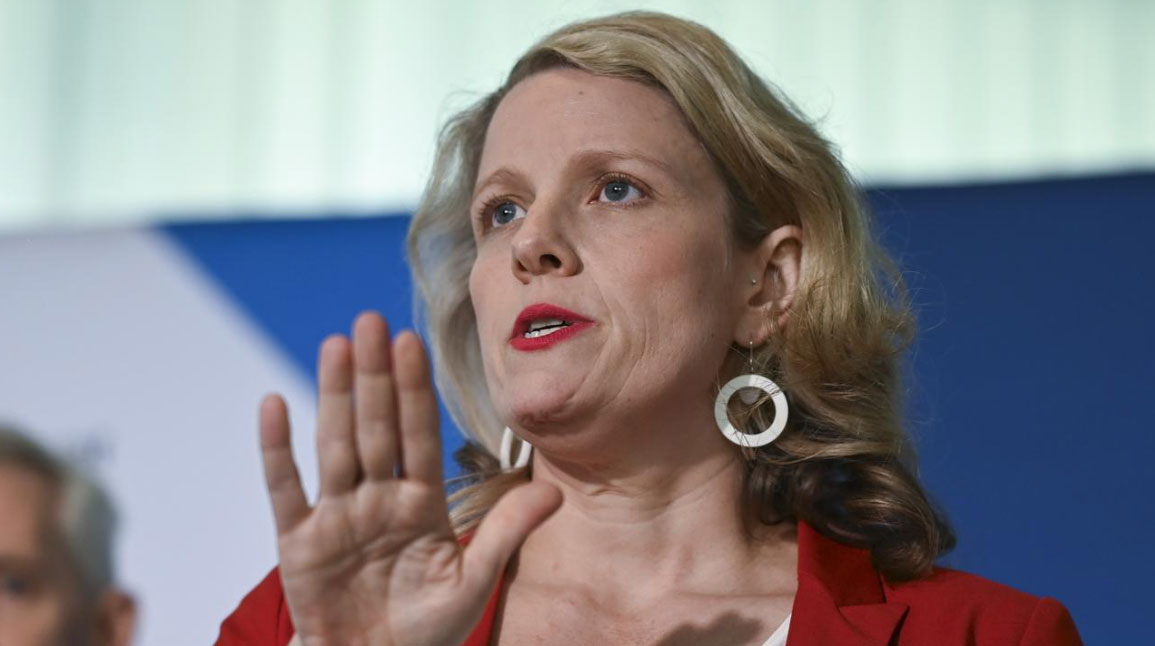
Key statistics
National – Annual population change
Australia’s population growth has rocketed back to the boom rates of the mid-1950s! New data released in December 2023 from the Australian Bureau of Statistics (ABS) shows the country’s population grew by 2.4 per cent this year, welcoming a record 624,100 residents in the past 12 months.
The population rose by 624,100 in the year to June, with net overseas migration adding 518,100, an increase of more than 150 per cent on the previous year and the highest nominal inflow ever recorded.
The last time the nation’s population grew by 2.4 per cent was in 1955 and 1956, as the post-war baby boom was in full swing, Melbourne prepared to host the Olympic Games, Robert Menzies was in The Lodge and the slogan “populate or perish” was at large to convince Australians to accept a high migrant intake.
Historian Geoffrey Blainey said “in the 1950s, when we welcomed a strong inflow of migrants, Canberra had valid and well-argued reasons for fostering immigration”.
“Many Australian leaders then thought Australia had been lucky not be invaded by the Japanese forces. A larger population was needed,” Professor Blainey said.
On Thursday (14th December), Jim Chalmers said “there was a big catch up in net overseas migration last year”.
Before the pandemic, Treasury was projecting net migration would add 953,000 to the population over the four years to the end of June.
After recording a net outflow of 85,000 people in 2020-21, in the wake of border closures and state government lockdowns, the four-year cumulative contribution from migration was 828,000 or 125,000 fewer than expected prior to the Covid-19 crisis.
In December, Home Affairs Minister Clare O’Neil launched the federal government’s long-awaited response to the Parkinson Migration Review, with a strategy she claimed would attract the most-skilled migrants and curb the number of students and temporary workers.
Ms O’Neil said the road map “is a commitment to getting our system back on track”.
Ms O’Neil said there was a global post-pandemic surge in people movements that put Australia, a desirable location for foreign students and workers, in the frontline of the disruption along with the US, Canada, Britain and New Zealand.
Professor Blainey said during the “big scale” 1950s migration, “jobs for the unskilled were abundant but now are less plentiful”.
ABS head of demography Beidar Cho said Australia’s population at the end of June was 26.64 million people.
The record net inflow of last financial year was due to 737,200 overseas migration arrivals, less 219,100 departures.
Annual population growth is now above the 2.2 per cent recorded at the end of 2008, prompting then prime minister Kevin Rudd to urge the nation to embrace rapid population growth. “I actually believe in a big Australia, I make no apology for that,”he said in October 2009.
NSW remained the most popular Australian destination for overseas migrants, with more than 174,000 people flocking to the state. Victoria was next, with a net migration rate of 154,256 people, ahead of Queensland and South Australia.
Tasmania and the Northern Territory attracted the least interest from foreign-born residents, with a net migration rate of 4032 and 3335 this year, respectively.
Tasmania also had the slowest population growth in Australia this year, with only a 0.3 per cent increase from 2022.
Western Australia recorded the fastest population rise by percentage, growing by 3.1 per cent to 2.9 million people. This was followed by Victoria, which grew by 2.7 per cent to a record 6.8 million residents.
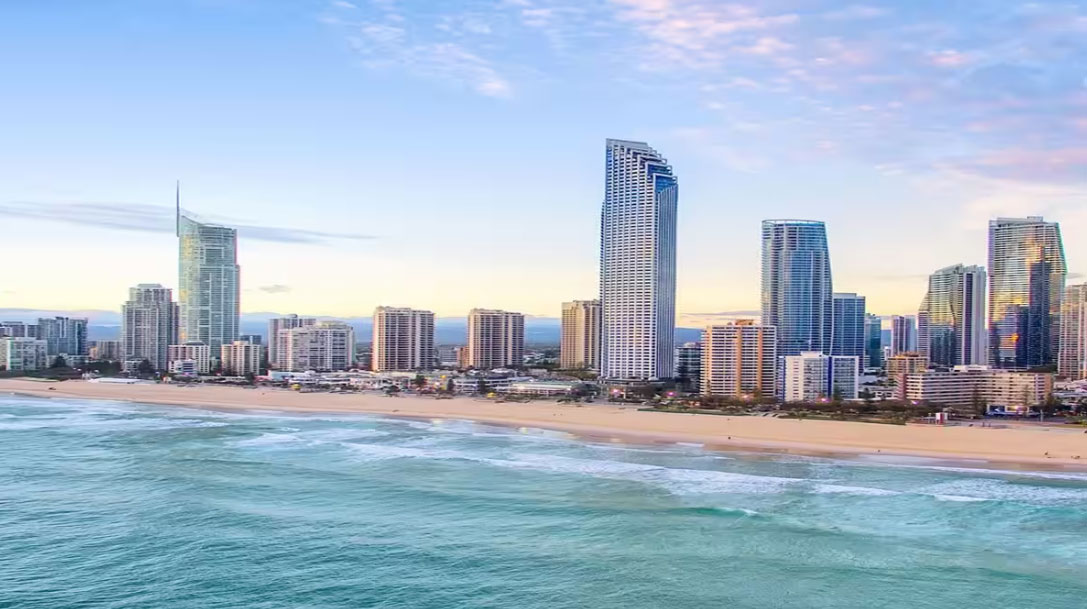
Today, more than half of all Australians were born abroad or have a foreign parent
The Migration Strategy, released in December 2023 by the Australian Government, outlines major improvements to Australia’s migration system to meet the nation’s future demands and deliver for Australia—its people, businesses, governments, and migrants.
The Migration Strategy establishes five primary goals for Australia’s migration system. To achieve these goals, the government will implement eight essential steps, backed up by more than 25 new policy pledges and existing commitments.
Temporary Skilled Migration
Australia’s temporary visa programs allow people to come to Australia for a broad range of specific purposes such as to visit, study and work. A proportion of temporary visa holders apply for an extension of temporary stay, while some temporary visa holders opt for permanent stay through the Migration Program.
One of the many actions, the Australian government has proposed to take in the Migration Strategy is to target temporary skilled migration to address skills needs and promote worker mobility.
A new Skills in Demand visa with three targeted pathways, and visa settings that encourage migrant worker mobility in the labour market could be launched. Further, a new Specialist Skills Pathway to make it easier for Australia to attract highly skilled workers, for example in the technology or green energy industries is proposed.
A Core Skills Pathway to meet targeted workforce needs, with a simpler, regularly updated occupation list for the skills Australia needs is also on the anvil. Finally, new visa settings that give migrant workers more mobility in the labour market to help tackle worker exploitation and drive productivity are to be taken up along with streamlined visa processing.
Permanent Skilled Migration
For reshaping permanent skilled migration to drive long-term prosperity a commitment to explore a reformed points test for permanent skilled migration, and a new Talent and Innovation visa for migrants who can drive growth in sectors of national importance has been considered in the Migration Strategy.
The Migration Strategy also puts focus on regional visas and the Working Holiday Maker Program to support regional Australia and its workers. Working Holiday Maker Program allows young adults to have a 12-month holiday, during which they can undertake short-term work and study.
The government also aims a system-wide simplification agenda that will streamline visa settings, reduce visa classes and make the system easier to use.
The Australian Government has invested in the following immigration-related measures within the 2023-24 Budget:
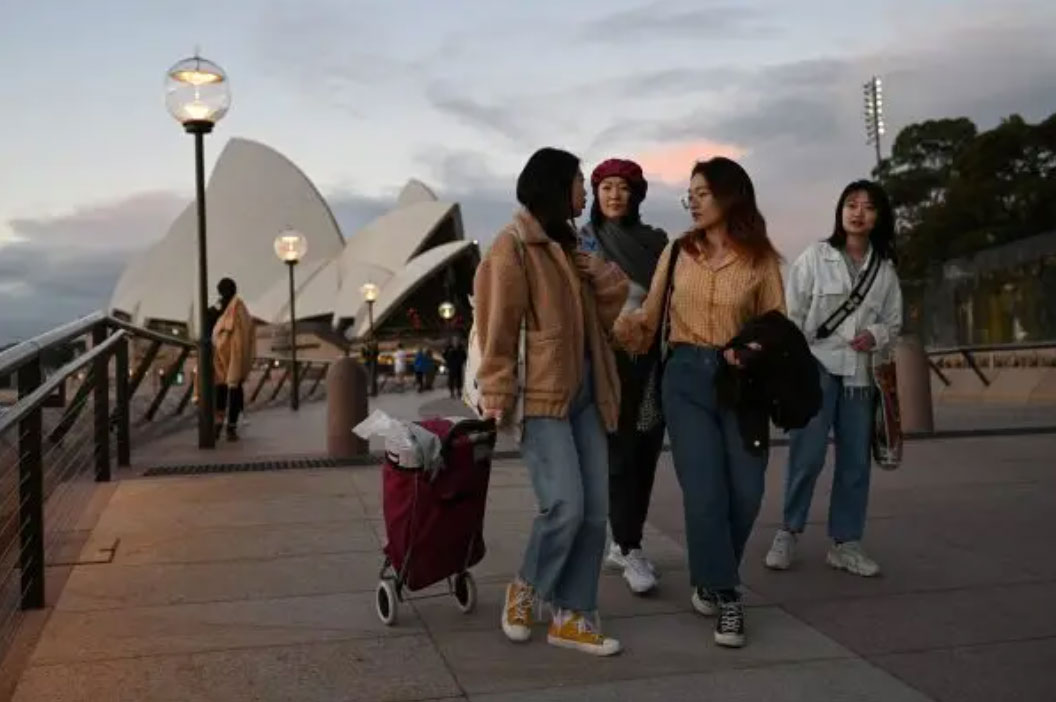
Perhaps Australia’s greatest postwar achievement has been the creation of a functional and tolerant multicultural, multiethnic and multi-religious society that has become the envy of the world. However, it is very important to recognise that despite this success, it remains very much a work in progress – one that needs continuous, careful nurturing.
As a percentage of its population, Australia has one of the highest rates of immigration in the democratic world. It is also a country that is frequently copied in terms of its skilled, asylum and integration policies. What happens in Australia with regards to immigration policy reform has implications for many other nations.
The Government’s new blueprint looks at the immigration system’s components. It brings a new strategy for meeting skills shortages – a key objective over decades and one that, despite considerable efforts, successive governments have failed to fulfil effectively.
It remains to be seen if this approach will succeed where prior attempts to target shortages have failed. The latest Skills Priority List showed that 36 per cent of occupations assessed faced shortages, and the situation was worsening. Over the past year, a further 66 occupations have fallen into shortage, most of which required highly skilled professionals.
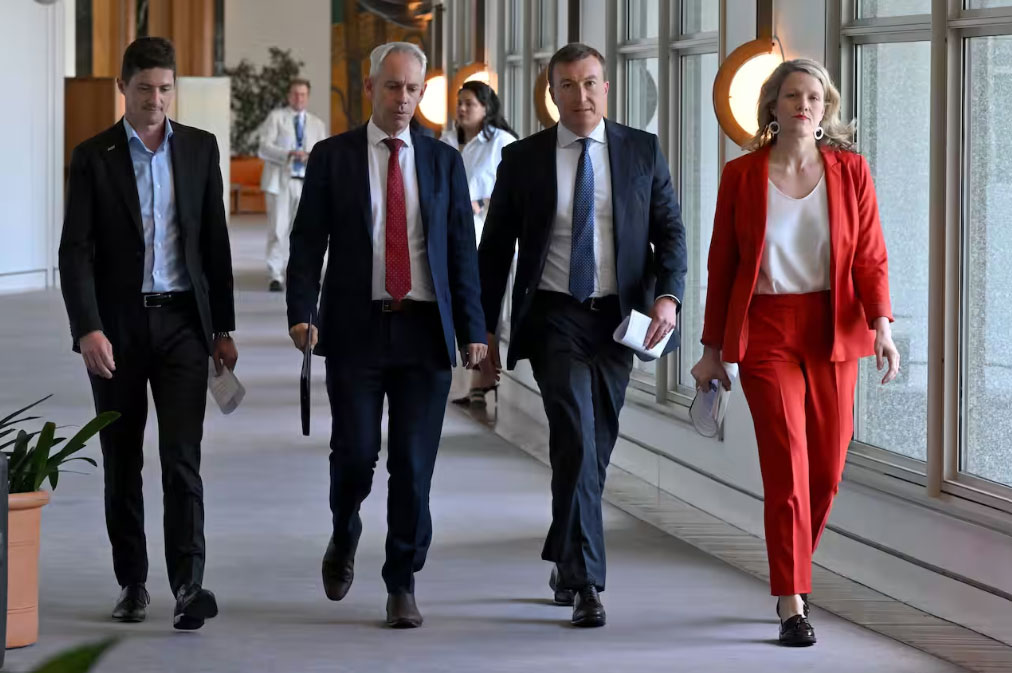
“The Federal Government’s new migration strategy announced in December 2023 should make positive contributions by improving the integrity of and confidence in Australia’s migration program and by helping employers source the increasingly scarce skills they need in a tight labour market,” Innes Willox Chief Executive of the national employer association Ai Group said.
“Better planning for migration targets, improved processing, support for the regions, an emphasis on attracting specialist skills and improved identification of skills in demand are all welcome changes that will help the system to better respond to the needs of our modern economy.
“Careful monitoring will be necessary to ensure that the much higher Temporary Skilled Migration Income Threshold of $70,000, and its indexing, will not serve as too much of a barrier to entry.
“These settings will be reviewed regularly to understand their impact and the Government should be open to adjusting such target levels as necessary.
“The move towards multi-year planning for permanent migration numbers is welcome. This should be accompanied by a recommitment to maintain the target of at least two-thirds of that program being comprised of skilled migrants.
“Strengthening the requirements for international education providers and raising English language standards will benefit the educational experience for both international students and the Australian students they study alongside.
“Many of the future commitments in the migration strategy are accompanied by plans for tripartite consultation involving business, unions and government, which is welcome.

KEY POINTS
The government’s long-awaited migration review is out, and it comes with tougher restrictions on international students, with more than 650,000 international students currently in Australia, and many now pushing for additional visas.
It comes after a review by senior public servant Martin Parkinson, which warned Australia’s migration system was “not fit for purpose” and overly dependent on temporary migration.
Flanked by union and business representatives on Monday, Home Affairs Minister Clare O’Neil declared the government would “bring numbers back under control” by building a system based on the country’s needs.
“We’ve got an urgent need to transition to a net zero economy, and we don’t have the skills and capabilities here to do it. We face the most challenging geostrategic circumstances in our region that we’re seeing in 70 years, and we need to build sovereign capabilities fast,” she said.
“Migration can help us answer all of these challenges. It’s not the full answer to any of them, but it’s part of the way there.”
Here are the key takeaways:
Language tests for students
Getting a student visa will mean an applicant needs better English.
Someone applying for a graduate visa will need to score 6.5 on the International English Language Tests System (up from 6.0), and someone applying for a student visa will need to score 6.0 (up from 5.5).
The strategy says this will have multiple benefits: improving the quality of their education experience, and boosting the reputation of the education sector.
Those with poor English skills are more likely to face exploitation in the Australian labour market.
Crucially, the review says it will also improve the quality of work they are able to attain when they graduate; the current system is sending foreign graduates into work well below their skill level.
There’ll also be restrictions on visa hopping, which the government says creates “permanent temporariness”. Around 108,000 international students have been in Australia for over five years, by shifting to another visa type.
The system currently means a graduate can stay in Australia for up to eight years by applying for various visas and waiting for processing.
What’s already been done?
It comes after a busy 12 months on visas.
Earlier this year, the government raised the income required to be eligible for the Temporary Skilled Migration Income Threshold (TSMIT) from $53,900 to $70,000. The previous figure was set in 2013 and not indexed, meaning it did not keep pace with wages.
The government said that meant a scheme set up to bring in skilled workers was actually an avenue for cheap labour. Labor will also move to index the TSMIT, meaning it would automatically rise with wages.
The Pandemic Event Visa, created in 2020 at the height of COVID-19, is also being phased out.
The visa was easy to jump onto for people already in Australia – it was free to apply for, and could easily be extended for a year with no additional fee.
But the government announced in September it would be phased out, with no new applicants allowed from September 2023, and applications closed entirely from February 2024.
That means the last visas will expire in August 2024, and around 70,000 people on the visa could leave Australia within the next 12 months.
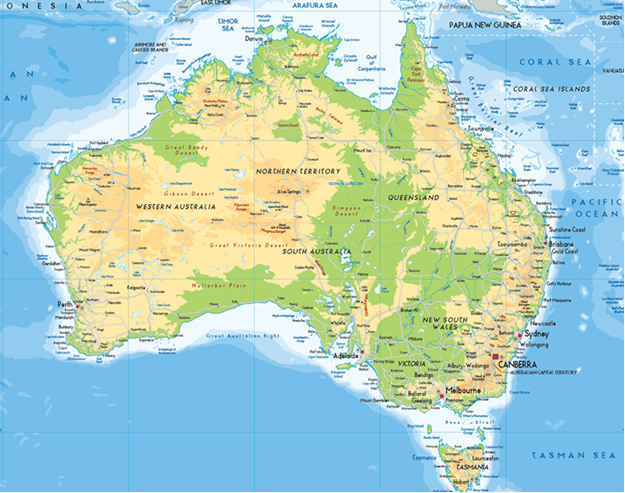
If you are interested in applying for a general skilled migration visa to Australia, it is important to have a good understanding of the skilled visa options and how the migration points test works, so that you can maximise your chances of being eligible to apply for a skilled visa.
A general skilled migration visa is an option available to skilled workers who are seeking to qualify for a skilled visa independently, or under a state or family sponsorship. It is an alternative to an employer sponsored visa.
One of the key criteria to qualify for a general skilled migration visa is the points test (a criterion that does not apply to employer sponsored visas). This is often the most challenging aspect for prospective skilled visa applicants to overcome when seeking an invitation to apply for the relevant skilled visa.
If you are considering applying for a general skilled migration program visa, an important concept to understand is the Expression Of Interest (EOI).
If you are considering applying for a general skilled migration visa, it is important to be aware that for certain visas in this visa class, you will first be required to lodge an EOI with the Department of Home Affairs (the Department) through Skill Select. The EOI is not a visa application, but rather, it is the process by which you can express your interest in applying for the relevant skilled visa (It’s important to note, that there is NO fee to submit an EOI).
This requirement applies to the following skilled visa subclasses:
Let’s take a brief look at each of these visas below:
The ‘subclass 189’ is a federal sponsored visa that grants automatic permanent residence in Australia. It is subject to nil visa conditions or obligations. For this reason, it is often considered to be the most flexible of the skilled visa options available.
A subclass 189 points-based visa allows you to live and work in any state or territory permanently.
The ‘subclass 190’ is a state/ territory sponsored permanent residence visa. It is another points-based visa for which invitations are issued throughout each month by individual states and territories. One of the benefits of applying for state nomination is that you will be granted an additional 5 points.
An important aspect to consider, which does not apply to the subclass 189 visa is that there is an added step in the application process. In this case, you must also apply for nomination approval to a state or territory government. Only upon receipt of an invitation from the relevant state or territory to which you apply can you then apply to the Department for the visa itself.
Your obligations as a subclass 190 visa holder are that you must commit to your nominating jurisdiction’s obligations and commit to residing in your nominating State or Territory for two years from visa grant.
The ‘subclass 491’ is also a points-based state/ territory (or family) sponsored visa. It is a regional visa with a term of five years. The Department issues invitations for family sponsored EOI applications only (in invitation rounds). Invitations for state sponsorship are issued by individual states and territories throughout each month. This will grant you an additional 15 points for the nomination.
Being a provisional visa, this means it provides a pathway to permanent residence in Australia with the Subclass 191 Permanent Residence (Skilled Regional) visa, subject to meeting specified requirements.
Be mindful that as a subclass 491 visa holder, you must abide by visa condition 8579, which requires you to live, work and study in a designated regional area of Australia. For migration purposes, most locations of Australia outside of major cities (Sydney, Melbourne, Brisbane, Perth, etc.) are classed as regional areas.
If your EOI is successful, you will receive an invitation to apply for the visa, as specified in the invitation letter. This then enables you to proceed with lodgment of your visa application (provided you meet all other visa lodgment and visa grant requirements).
Please note, the below State and Territory program updates is a general overview only. It does not take into account any of your personal circumstances. You must check the State/Territory information carefully to ensure you can meet all the requirements for nomination.
Australia is currently facing a shortage of skilled migrants to fill workforce demands. In response, states and territories have been easing the conditions of their visa programs to help attract skilled workers from overseas.
Below is the monthly update for some of the State and Territory opportunities available.
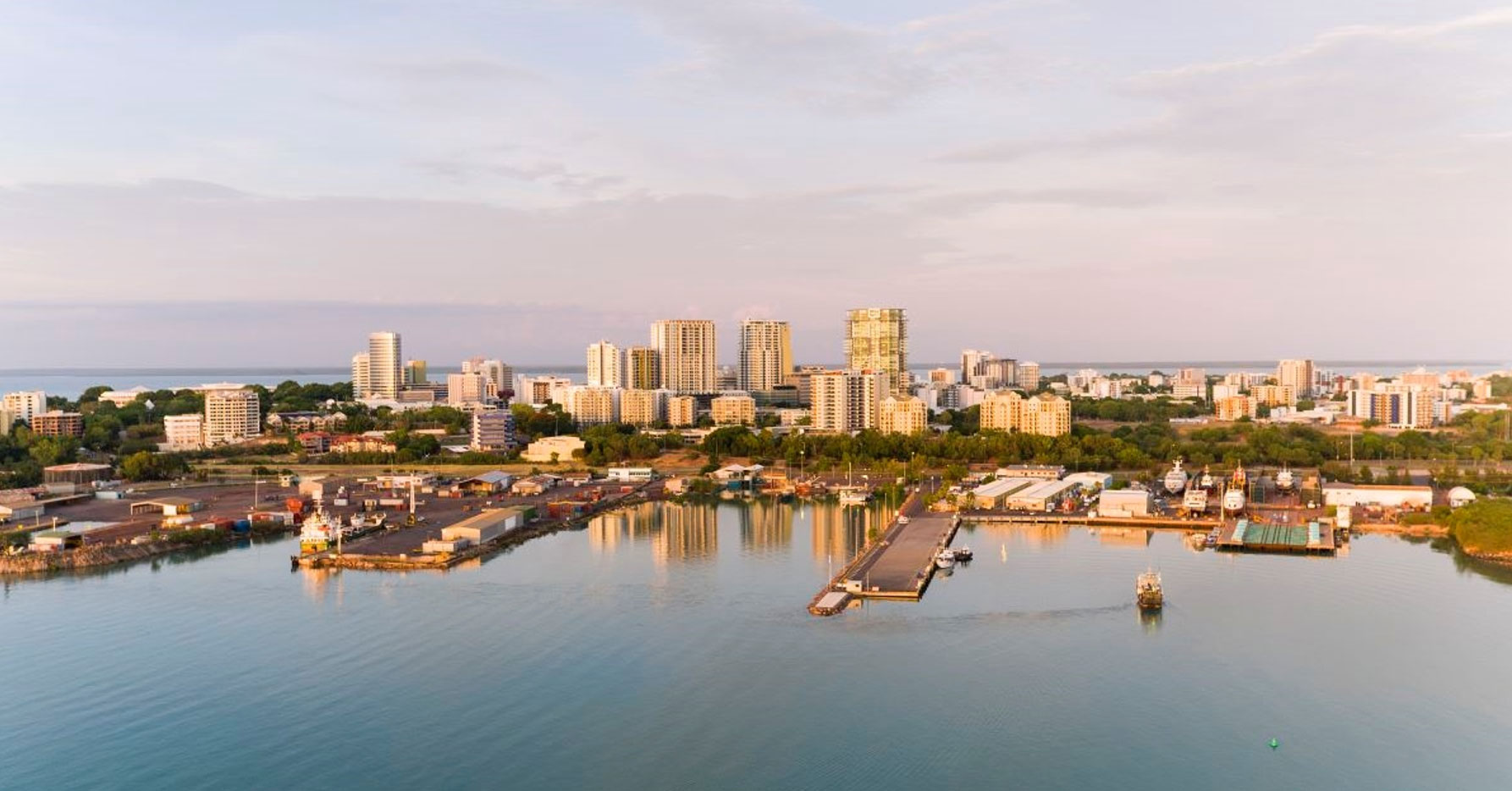
Program Status Update
UPDATE: NT GSM nomination applications for 2023-24 now open for subclass 491
The NT Government have begun accepting new applications for nomination under the Skilled Work Regional (Provisional) subclass 491 visa program.
Applications are assessed under new eligibility criteria as published on the NT website.
A summary of key changes to eligibility criteria are as follows:
Please see the full eligibility criteria.
Onshore applicants should make their applications well ahead of any visa expiry dates. Those who have visas expiring should seek professional advice on their visa options and ensure that they remain lawful during their stay in Australia.
It is the applicants’ responsibility to ensure that they meet visa eligibility criteria, including maintaining valid skills assessments and English test results.
People residing offshore are eligible to be considered for Northern Territory (NT) nomination. Invitations to apply for Northern Territory nomination will be via the ranking system.
The ‘Northern Territory Offshore Migration Occupation List’ identifies the occupations in current demand in the Northern Territory. This List is important if you want to apply for Northern Territory nomination for either a:
The ‘Northern Territory Offshore Migration Occupation List’ is only applicable for those applying for NT nomination from outside Australia, under the Priority Occupation stream.
Please note: The Northern Territory government has advised that offshore applicants will generally only be offered a Northern Territory nomination for a subclass 491 visa. Subclass 190 nominations will only be offered in exceptional circumstances, such as cases where the applicant has strong connections to the NT.
The NT advises eligible applicants to apply as soon as they meet the eligibility criteria. To receive a nomination from the NT Government, you must:
Before submitting an EOI for The Northern Territory, applicants should check that they meet all eligibility requirements.
For a further explanation, see the Frequently Asked Questions page on the Northern Territory Government website.
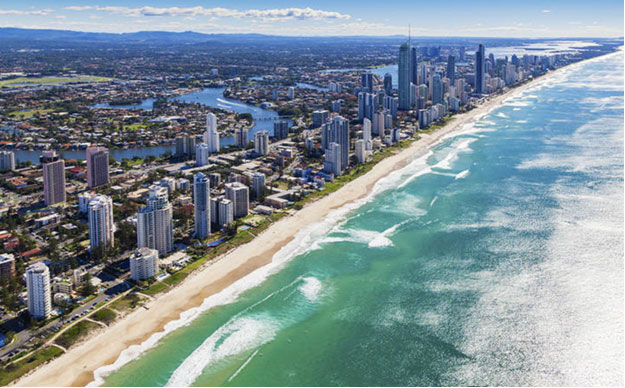
Program Status Update
To manage Queensland’s COVID recovery response, applicants currently residing offshore are now able to apply.
Depending on your occupation and situation, there are two state nomination options available for skilled migrants through Queensland.
For Queensland state nomination, prospective applicants must meet the Department of Home Affairs requirements, state-specific occupation requirements and have skills in an occupation that is available on the Queensland Skilled Occupation List.
You may undertake employment once onshore in Queensland through:
Offshore applicants meeting the minimum published requirements are eligible to lodge an Expression of Interest (EOI).
NOTE: The 2023 – 24 program opened on 5 September 2023. Migration Queensland will only consider EOIs lodged on or after 5 September 2023 – updated EOIs will not be considered.
Migration Queensland criteria requires you to:
The agency also requests all applicants to ensure they have carefully read and understood the new criteria relevant to their stream or pathway, and that they meet the criteria before submitting an Expression of Interest (EOI).
The 2023-24 Skilled Migration Program will be open to both onshore and offshore applicants and provide pathways for skilled workers, graduates, and small business owners.
Before submitting an EOI for Queensland, applicants should check that they meet all eligibility requirements.
For a further explanation, see the Frequently Asked Questions page on the Queensland Government website.
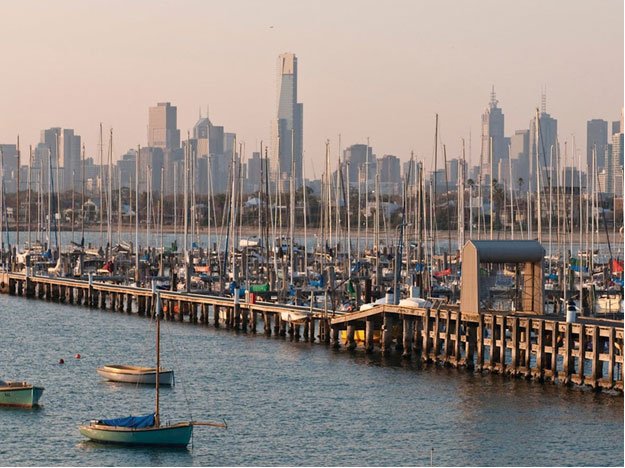
Program Status Update
Open to offshore applicants, the program provides skilled migrants with a pathway to permanent residency in Victoria. The skills that successful applicants bring to Victoria benefits employers and the broader Victorian economy.
The program provides two visa pathways:
As with previous years, applicants will first need to submit a Registration of Interest (ROI) and then be selected on competitive merit to apply for visa nomination.
NOTE: If you submitted a subclass 491 ROI for the 2022-23 program, you must submit a new ROI for the 2023-24 program.
If you submitted a subclass 190 ROI for the 2022-23 program, you do not need to submit a new ROI for the 2023-24 program. You should ensure that all information in your ROI is still correct.
Both onshore and offshore applicants are eligible to submit a Registration of Interest (ROI) for both the subclass 190 and subclass 491 visas.
Your ROI will remain in the system for selection until it is withdrawn, selected or the program year ends.
Before submitting an ROI for Victoria, applicants should check that they meet all eligibility requirements.
For a further explanation, see the Frequently Asked Questions page on the Victoria Government website.
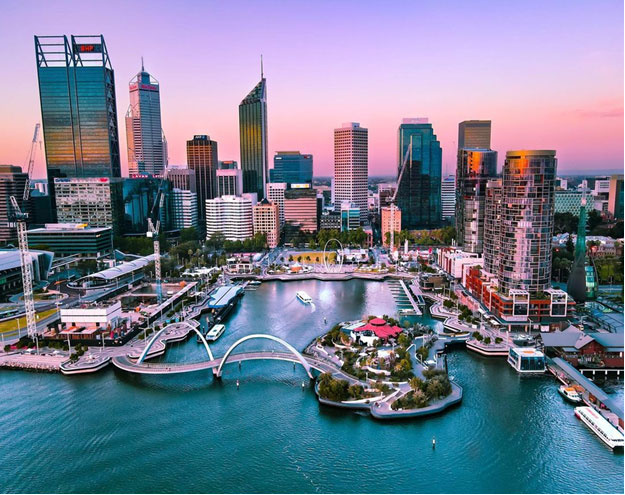
Program Status Update
People residing offshore are eligible to be considered for Western Australia (WA) State nomination. Invitations to apply for WA State nomination will be via the ranking system.
The Western Australian Skilled Migration Occupation List identifies the occupations in current demand in Western Australia. This List is important if you want to apply for Western Australia nomination for either a:
Please note that to be eligible for an invitation in the WA State Nominated Migration Program, you must meet both:
Before starting your application, you will need to check whether your occupation is available on either the WA Skilled migration occupation list (WASMOL) Schedule 1 or 2, or the Graduate occupation list. You can search for your occupation here. (The occupation list search bar is located under the heading ‘Eligible Occupations’.)
Features of the WA 2023-24 State Nominated Migration Program:
Before submitting an EOI for Western Australia, applicants should check that they meet all eligibility requirements.
For a further explanation, see the Frequently Asked Questions page on the Western Australia Government website.
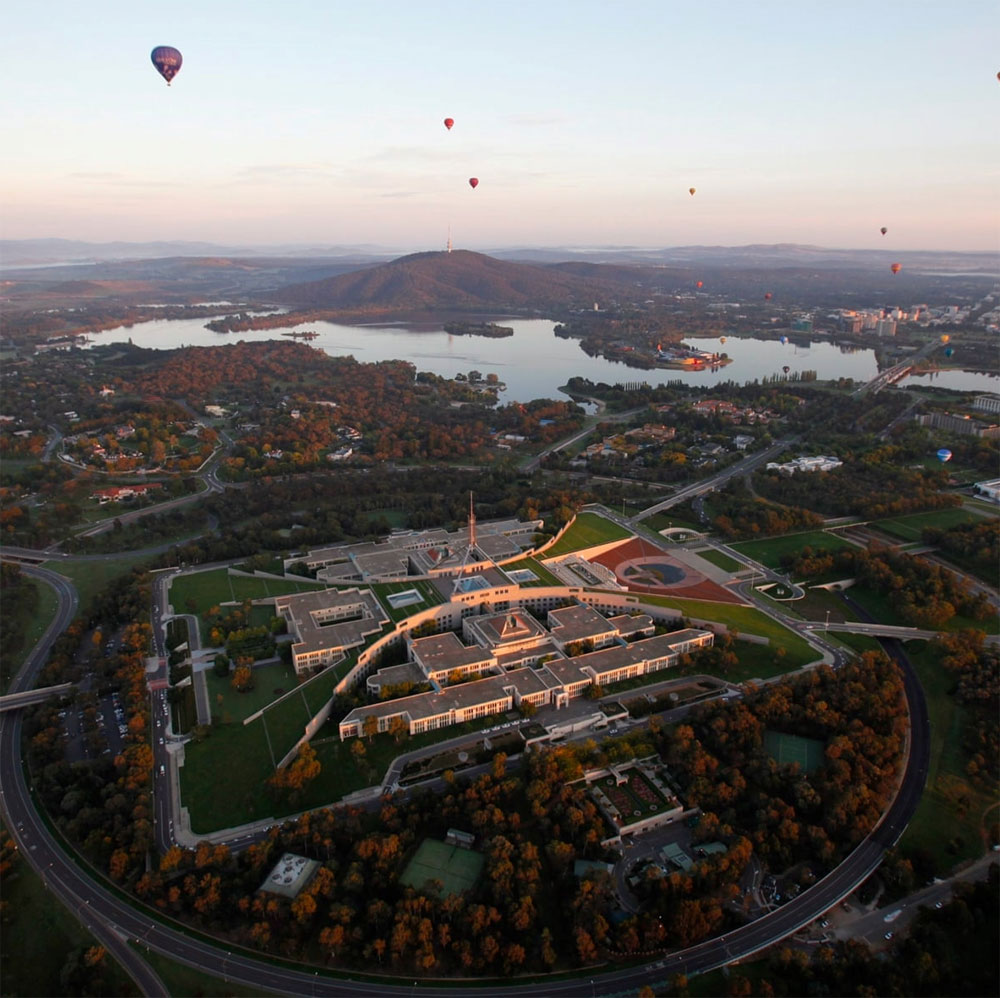
Program Status Update
The ACT Critical Skills List identifies the occupations in current demand in the ACT. This List is important if you want to apply for ACT nomination for either a:
The ACT Government will update this list every four months to make sure that the ACT Skilled Migration Program adapts and responds to the evolving critical skills needs of the ACT economy.
The Canberra Matrix is weighted to ensure that applicants who will make a positive economic contribution to the Territory and/or have demonstrated a genuine commitment to the ACT are more likely to be ranked and invited to apply for ACT nomination.
*ACT nomination does not guarantee a migration outcome. You must still meet the Department of Home Affairs criteria.
Every month, a certain number of nomination invitations are available (prorated on the annual allocation) to those working in the highest ranked Matrix in each occupation.
You can view the ACT’s most in-demand skills for skilled migration by consulting the ACT Critical Skills List.
Before submitting an EOI for The Australian Capital Territory, applicants should check that they meet all eligibility requirements.
Once you’ve submitted a valid Department of Home Affairs Skill Select EOI, follow the ACT Government Process to apply for ACT nomination.
For a further explanation, see the Resources page on the ACT Government website.
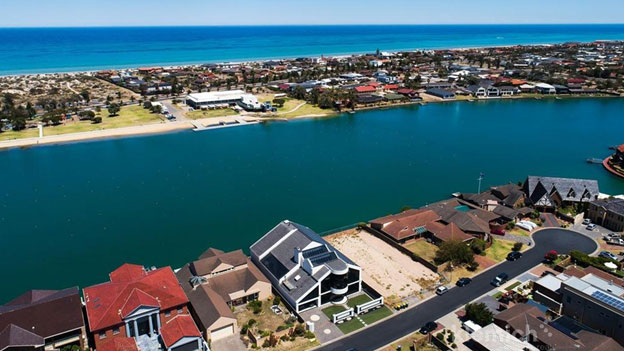
Program Status Update
To manage South Australia’s COVID recovery response, applicants currently residing offshore are able to apply.
Depending on your occupation and situation, there are two state nomination options available for skilled migrants through South Australia.
For South Australian state nomination, prospective applicants must meet the Department of Home Affairs requirements, state-specific occupation requirements and have skills in an occupation that is available on the South Australian Skilled Occupation List. Offshore applicants meeting the minimum published requirements can now lodge an Expression of Interest (EOI).
There is an enormous range of occupations on South Australia’s Skilled Migration Occupation List in a range of industries – search for your occupation here.
South Australia will select offshore applicants to apply for state nomination from those who have submitted an Expression of Interest (EOI) through SkillSelect. Offshore applicants will not need to lodge a Registration of Interest (ROI) for this year’s program. South Australia will be nominating offshore applicants from over 250 occupations on South Australia’s Skilled Migration Occupation List. To be eligible, ensure all the information in your SkillSelect EOI is up to date and you have selected South Australia as your first preferred state or territory to move to in Australia.
South Australia will be assessing candidates on merit by the following factors, within their nominated occupation:
Before submitting an EOI for South Australia, applicants should check that they meet all eligibility requirements.
For a further explanation, see the Frequently Asked Questions page on the South Australia Government website.
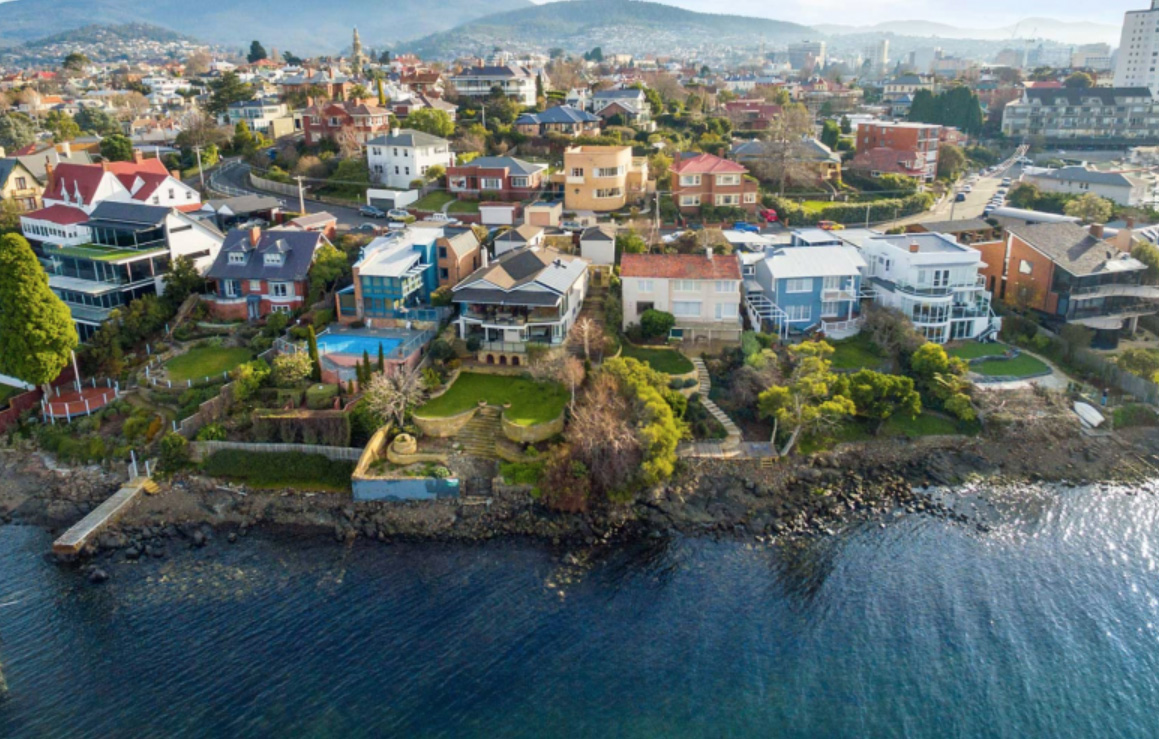
Program Status Update
Working in Tasmania
The two state nomination options available for skilled migrants through Tasmania are:
The Tasmanian State Nomination Skilled Migration Program supports Tasmanian businesses and increases the state’s working age population. It does this by attracting and retaining migrants with skills genuinely in need by employers, or with the capacity to settle in Tasmania through skilled employment in the long-term, and business activities that will increase employment opportunities.
Tasmania’s skilled migration program is for people wanting to move to the state who have skills that Tasmania need. Skilled migrants are attracted to Tasmania because of the state’s enviable lifestyle, career opportunities, affordable housing, reputable schools and a globally recognized university.
The Migration Tasmania Application Gateway is now available for registrations of interest (ROI) and applications for skilled visa nomination from Tasmania.
Anyone seeking Tasmanian nomination for a Subclass 190 Skilled Nominated Visa or Subclass 491 Skilled Work Regional Visa must first register in the Migration Tasmania Application Gateway .
Before submitting an ROI for Tasmania, applicants should check that they meet all eligibility requirements for either;
ROIs submitted before 1 July 2023 will remain valid for the 2023-24 program year.
ROIs and applications submitted from 5 July 2023 fall under the new eligibility requirements.
In cases where new requirements are likely to be beneficial, candidates may wish to withdraw their current ROI and submit a new one. (There is no charge to submit a Registration of Interest)
For a further explanation, see the Frequently Asked Questions page on the Tasmania Government website.
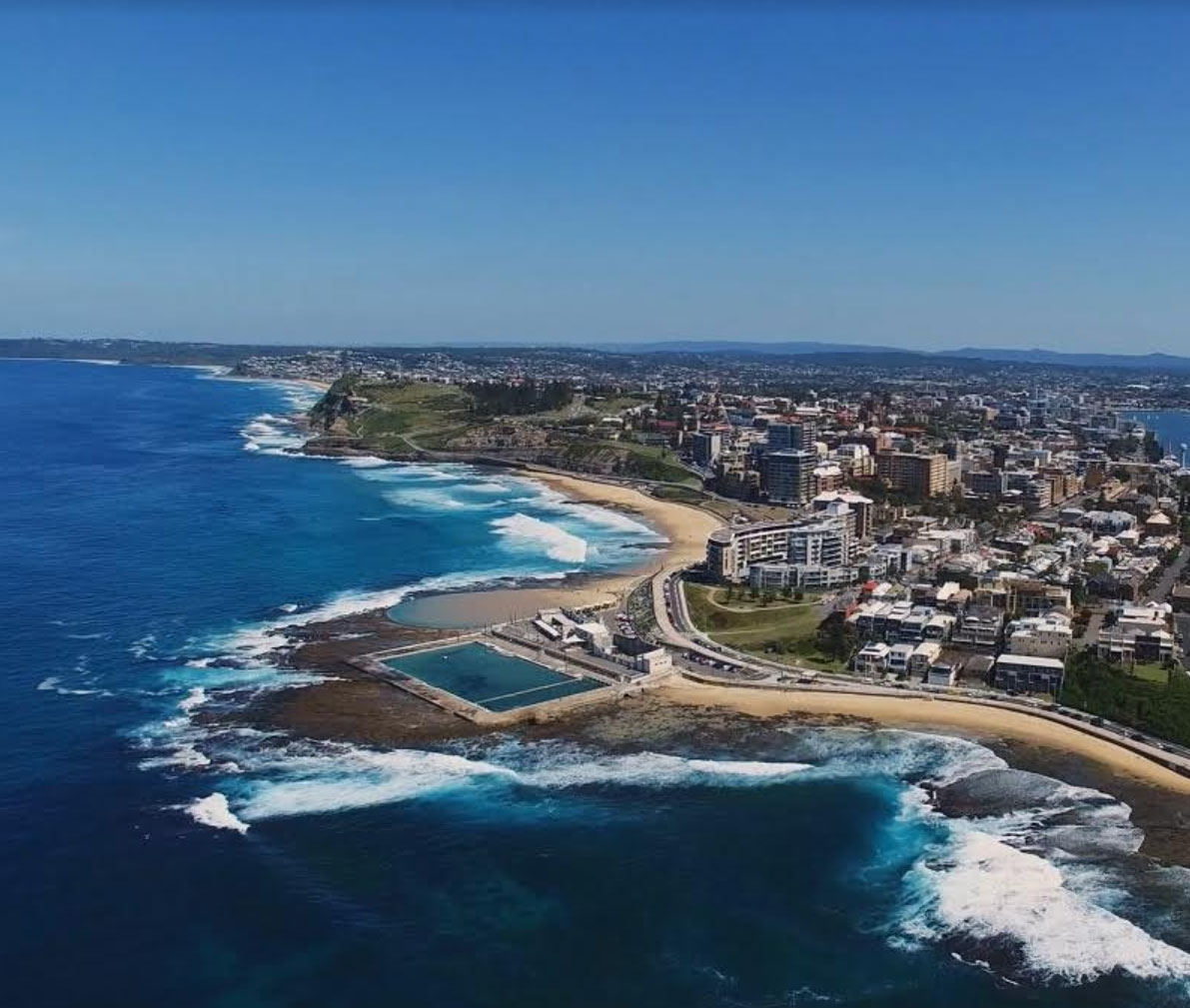
Program Status Update
The New South Wales government has invited applications from offshore migrants under the following nomination streams:
The NSW State Government announced that offshore applicants skilled in certain ANZSCO unit groups are still eligible for NSW nomination.
*Please note: Invitation rounds occur frequently throughout the financial year with no set date.
NSW invites and nominates SkillSelect EOIs at the ANZSCO unit group level. To be eligible for NSW nomination (for either Subclass 190 or Subclass 491) you must be skilled in an occupation that both:
It is important to note that not all occupations within ANZSCO unit groups are eligible for the respective visa. It is the responsibility of the prospective migrant to ensure their occupation is eligible for the visa before obtaining a skills assessment.
Your EOI must be exclusively for the ‘Skilled Nominated visa (Subclass 190)’ or ‘Skilled Work Regional visa (subclass491)’ and seeking nomination from NSW only.
This means that if your Skillselect EOI has multiple visas and/or multiple states selected (this includes selecting ‘ANY’), your Skillselect EOI will not be considered for NSW nomination.
What are the NSW target sectors?
The NSW target sectors are specific industry sectors that have been identified by data research as having critical skills shortages in NSW. They include:
Although all validly submitted SkillSelect EOIs will be considered during an invitation round, priority is given to EOIs in these target sectors.
Is my occupation within a NSW target sector?
The NSW government cannot confirm whether individual occupations fall within NSW’s target sectors. So long as you maintain a validly submitted EOI in SkillSelect, your EOI will be considered in all future NSW invitation rounds.
Will NSW invite EOI’s in occupations outside of the NSW target sectors?
High-ranking EOIs in occupations outside of the NSW target sectors may be considered during invitation rounds; however, it’s crucial to understand that the odds of receiving an invitation are exceptionally low due to high demand and limited spots.
Before submitting an EOI for New South Wales, applicants should check that they meet all eligibility requirements for either;
For a further explanation of how the skills list works, see the Common questions about skilled visas page on the NSW Government website.
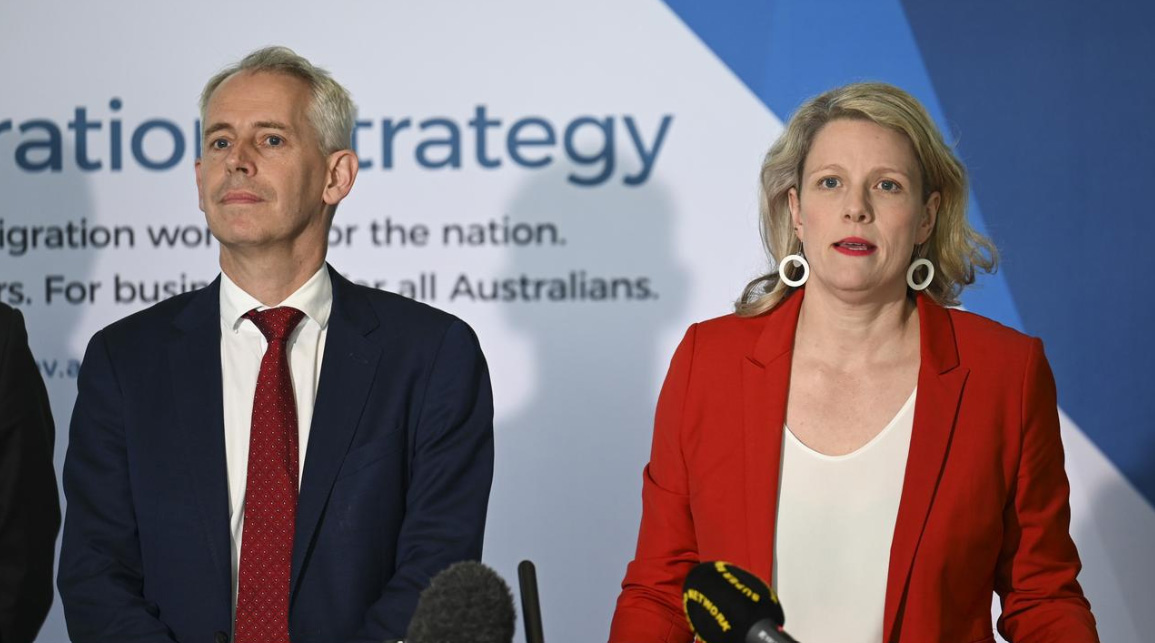
Home Affairs Minister Clare O’Neil and Immigration Minister Andrew Giles launched Labor’s migration strategy.
Business groups and the peak union body have welcomed the Albanese government’s Migration Strategy, arguing the fast-tracking of visas for highly skilled workers will raise productivity growth, while the goal of improved long-term planning for arrivals will ease strains on the nation’s housing and services.
But the construction lobby said the exclusion of trades from a new “specialist” visa category would hinder the government’s efforts to solve the housing crisis, while the federal opposition said Labor’s five-year arrivals projections had blown out by a cumulative 125,000 since the May budget.
In December, Home Affairs Minister Clare O’Neil launched the government’s long-awaited response to the Migration Review, published in April, after consultations with industry, unions and lower levels of government.
The strategy includes new pathways for permanent settlers and prized highly skilled workers, as well as harsher rules to screen out non-genuine students.
Ms O’Neil said tightening English-language requirements on students and cracking down on “dodgy” education providers would “design out migrant worker exploitation from the system”.
“This strategy is about building back integrity into the system,” she said.
The pandemic’s migration losses will soon be restored, with cumulative net overseas migration now tracking closely with pre-Covid projections.
If Treasury’s latest estimates hold, by the middle of 2027 migration will have added 1.935 million people.
Business Council of Australia chief executive Bran Black said the government had “got the balance right” between training local workers and importing skills that were in short supply.
Mr Black welcomed “a new specialist skills pathway at a threshold of $135,000”.
He said the move will make it easier for employers to bring in the highly skilled talent needed to help develop local industry, and train and upskill Australian staff.
University of Adelaide law professor Joanna Howe, a member of the Parkinson review’s expert panel, said the “proper rigorous assessment of what skills are needed here” by Jobs and Skills Australia, in tandem with employers and unions, was a game changer that would for the first time bind the skills and training system with migration policy.
Professor Howe said allowing a temporary skilled worker who leaves their employer 180 days to find another job, with the ability to earn income in the meantime, was “really innovative” policy.
“No other country offers that mobility and it’s a courageous move,” she said.
ACTU acting secretary Liam O’Brien said Labor’s strategy “was a win for all workers” and would return permanency to the centre of Australia’s migration system.
“One of the key causes of migrant exploitation is specific visa conditions that effectively bond temporary migrant workers to their employer sponsor – meaning the employer controls your pay cheque and your passport,” Mr O’Brien said.
Master Builders Australia chief executive Denita Wawn said “labour shortages remain the biggest source of cost pressure and disruption for the building and construction industry”.
“We need skilled migrants now more than ever in the building and construction industry if we are going to meet the Housing Accord and net zero targets,” Ms Wawn said.
But she said bumping skilled trades into the second-tier of the three-tiered skills in demand four-year visa could confuse and discourage high-earning workers.
Opposition immigration spokesman Dan Tehan said the new strategy ignored the regions and non-urban communities would be worried the skills-in-demand visa would sever the link between temporary workers and the regional businesses that sponsor them, creating a shortage.

Australia’s top bosses think immigration should bring another year of economic growth, but believe 2024 is likely to be tougher than this year.
Australia’s top chief executives almost unanimously expect the domestic economy to skirt a recession next year despite lingering inflation, pressure on household budgets and the prospect of a long monetary pause.
CEOs from the banking, mining, retail, property and industrials sectors expect Australia’s economy to slow in the coming year, which along with cost pressures could mean a tougher 2024 for business and pressure on planned investment.
“We’re likely to avoid a hard landing in 2024,” Goodman Group founder and CEO Greg Goodman said.
“It’s also likely that inflation will keep slowing as a result of the interest rate rises we’ve seen. The business climate is, however, going to be more difficult, with spending more subdued.”
Macquarie Group’s Shemara Wikramanayake said Australia’s immigration profile and strength in key industries should keep the country out of recession in 2024; however, slower economic growth should bring inflation back to the Reserve Bank’s targeted range by the end of the year.
“Broad-based inflationary pressures, driven by relatively strong economic demand and a tight labour market, will likely abate in the face of this slower growth,” Ms Wikramanayake said.
Commonwealth Bank boss Matt Comyn said there was only low risk of a recession next year, although that would increase should high inflation persist and the RBA needed to increase official interest rates further.
“Given the sharp rise in interest rates over the past 18 months, we think we are at, or very close to, the top of the current rate cycle,” Mr Comyn said.
The comments were made as part of The Australian Financial Review’s annual Chanticleer survey of more than 50 top ASX CEOs. Nearly all said higher interest rates and inflation were likely to slow growth; however, they pointed to immigration and infrastructure spending as reasons why Australia would avoid a recession.
Wesfarmers CEO Rob Scott said the homegrown cost pressures, including staff costs and raw materials, were the “greatest challenge to inflation” in the coming year.
“We are seeing significant increases in supply chain costs, wages, power and other services,” said Mr Scott, whose company owns hardware retailer Bunnings Warehouse, discount retailer Kmart and a big industrials chemicals business.
“There are risks of further pressures in 2024 with additional regulation and compliance costs, and less flexibility in the workplace to adjust to dynamic changes in the market will ultimately increase costs if we are not careful.”
CEOs with consumer-facing businesses said cost-of-living pressures would keep customers rethinking their spending habits and choices. Even so, they kept referring to the economy as “resilient”.
“I think most people have been surprised at how resilient the economy has been this year in spite of global shocks and interest rate hikes, so we’re cautiously optimistic that resilience continues,” said Qantas CEO Vanessa Hudson, who took over from Alan Joyce in September.
“What we’re seeing is that demand across Jetstar and Qantas remains above pre-COVID levels, despite cost-of-living pressures.”
Coles CEO Leah Weckert, also new to her role, agreed customers were feeling the fiscal pinch: “Overall, we are optimistic about the resilience of the Australian economy and, in particular, non-discretionary sectors like supermarkets,” she said.
Woolworths’ Brad Banducci was reluctant to make any economic predictions, but said the government’s revised approach to skilled migration had helped address labour shortages that should ease cost pressures in the economy.
“It will allow Australia to better attract the talent we need to fill critical skills gaps and labour shortages across the economy, in turn supporting productivity growth,” Mr Banducci said.
“The ‘Skills In Demand’ visa is a big step forward and will help bring experts with emerging skills and expertise into Australia to help train and develop local team members.”
Elliott Rusanow, who runs Westfield owner Scentre Group and is a major landlord to the likes of Coles and Woolworths, said consumers were still spending up big at the shops.
“When you look at the consumer, aggregate consumer spending is also high,” Mr Rusanow said. “We’re seeing this play out in our business partner sales which are at record levels.”
Seven Group’s Ryan Stokes was one of only a few outliers who said there was a “high risk” of a hard economic landing and there was little room for further interest rate tightening.
“The resilience shown to date can only withstand so many shocks inflicted by the RBA,” Mr Stokes said.
“The RBA’s approach to the cash rate will eventually trigger the economic contraction they are targeting … In short, rates have already moved too far too quickly. Patience needs to be demonstrated. Further rate increases are not required in the near term.”
Newmont CEO Tom Palmer, an Australian whose company bought Australia’s biggest listed goldminer Newcrest Mining this year, said it was too early to declare victory in the fight against inflation.
“Until there is a sustained and honest effort to increase productivity in Australia through genuine reform, the RBA has little option but to use the blunt instrument of cash rate increases to try and reduce inflation,” Mr Palmer said.
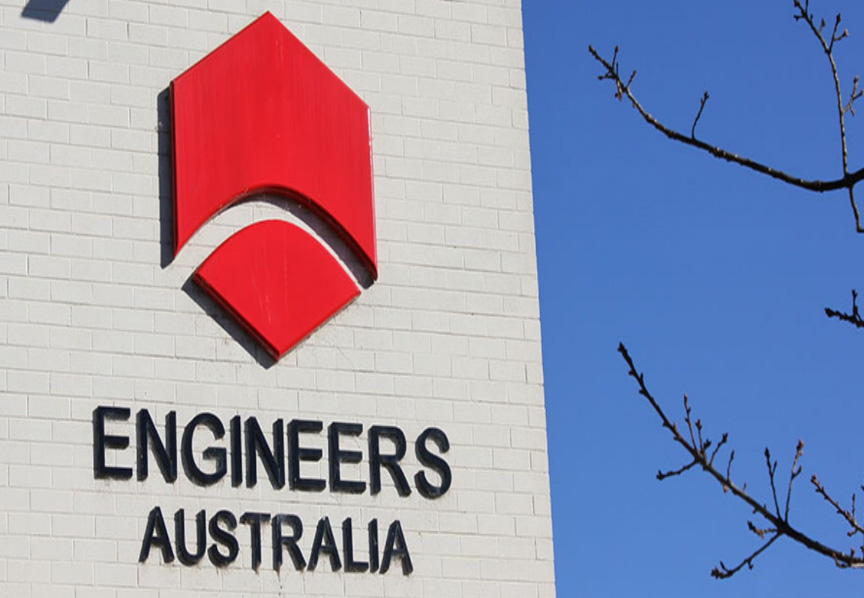
In reaction to the Australian government’s newly proposed migration strategy and Infrastructure Australia’s (IA) Market Capacity Report, Engineers Australia’s CEO Romilly Madew has emphasised the need for a balanced migration policy that safeguards local workers’ interests while tapping into the extensive pool of skilled migrants.
Madew stressed the importance of a fair and equitable migration system aligning with Australia’s socio-economic goals amid rapid technological advancement and global connectivity.
Madew also praised the government’s efforts to streamline migration processes for highly skilled professionals and introduce a new visa for specialist skills, seeing these as positive steps toward enabling employers to access essential skills for growth and innovation.
However, she underscored the significance of supporting skilled migrant engineers already in Australia in finding stable and relevant employment.
The IA Market Capacity Report, focusing on ‘regional hotspots’ experiencing labour shortages due to increased infrastructure investment, presents an opportunity to integrate migration policies with regional development.
Madew sees this integration as a chance to stimulate local economies and enhance skill development.
Highlighting the potential of skilled migrant engineers in these regional areas, Madew pointed out that many qualified engineers remain underutilized.
For instance, in New South Wales Mid North Coast, despite having 1,836 qualified engineers, 35 per cent are not employed in engineering roles, indicating a potential for targeted migration and skill improvement.
Madew drew attention to the challenges faced by qualified migrant engineers in finding relevant employment, citing that in 2021, 47 per cent of qualified migrant engineers actively sought engineering jobs despite the skills shortfall.
Engineers Australia’s GET program, designed to address employment barriers for skilled migrant engineers, offers a comprehensive strategy to assist them in integrating into the Australian engineering workforce.
The program includes supporting and equipping migrant engineers with skills and knowledge relevant to the Australian engineering sector.
Madew urged the government to implement the GET program in regional hotspots, not only to fill job vacancies but also to contribute to building a resilient, diverse, and innovative engineering workforce crucial for Australia’s future.
The report highlighted concerning statistics, including over 20 per cent of Australia’s qualified engineers not being in the labour force, an expected retirement of up to 68,133 engineers over the next 15 years, and a retention problem with approximately 3,200 engineers leaving the profession annually.
The majority of Australia’s engineering workforce is born overseas, comprising 70 per cent of the growth in the engineering labour force from 2016 to 2021.
In conclusion, Madew stressed the need for a strategic approach to address these challenges and ensure a skilled and diverse engineering workforce to meet Australia’s future needs.
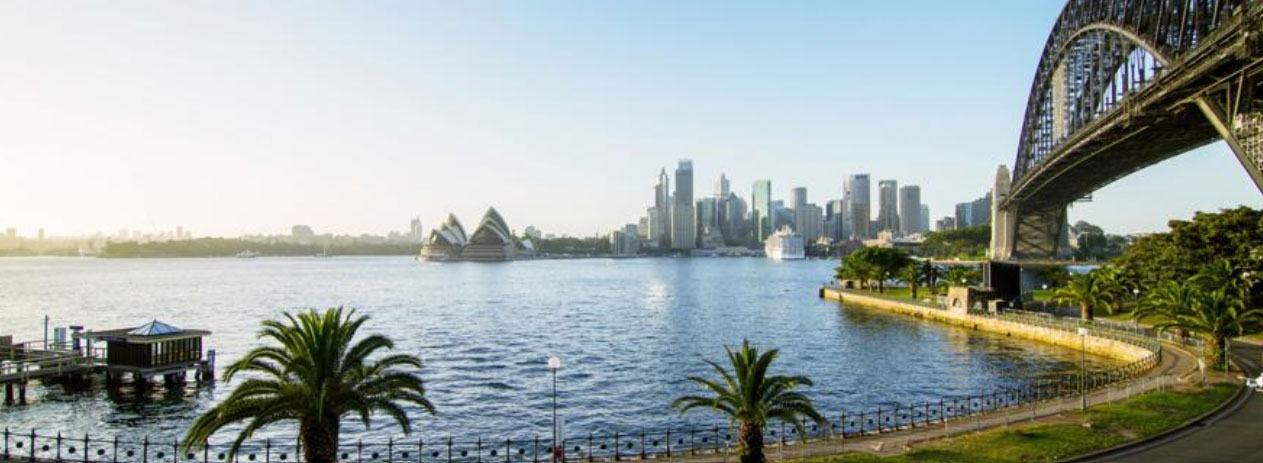
The Australian Government has vowed to apply more scrutiny to student visa applications and revamp its graduate visa system, as part of the long-awaited Migration Review. The Review points to a package of so-called “integrity measures” to improve standards in the sector for both providers and students.
The document, officially titled the Migration Strategy, includes eight key actions to overhaul the migration system, one of which focuses on international education.
“International education is a new engine of economic growth for Australia and an important part of our social fabric,” the review reads.
“However, growth in the sector needs to be promoted through integrity and quality, and students and graduates need to be better supported to realise their economic potential in the labour market,” it continues.
Despite assurances from CEO of IEAA Phil Honeywood that there would not be a cap on student numbers in November, Home Affairs minister Clare O’Neil refused to rule out just that at a press conference on the Strategy when asked.
She said, however, that she was confident Australia had “caught this problem in time” with the new package of measures.
These so-called “integrity measures” to improve standards in the sector for both providers and students, while reportedly making sure graduates “do not become ‘permanently temporary’”.
As part of the review, the government will introduce a brand new Genuine Student Test, which it assures will “incentivise” genuine student applications and discourage those that are not – that is, those “whose primary intention is to work rather than study”.
“This test will replace the existing Genuine Temporary Entrant requirement to acknowledge that post-study temporary migration (and beyond) pathways are available for those who may be eligible.”
Details of the questions that will be included in the test to discourage fake applications and abuse of the system have not been given.
Crucially, in a move that mirrors rules in the US, the test will “be clear that the vast majority” of international students in Australia will return home after their studies.
A notable part of the package includes a $19m investment into a new Department of Home Affairs’ student visa integrity unit, which will allow for “greater scrutiny” at the point of application, the document reads.
“This will reduce the misuse of student visas by those using it to seek work in Australia instead of study and those seeking to exploit international students.”
However, a distinct lack of details are shared regarding how the integrity unit will be implementing the funds and how it will further scrutinise applications. It did note it would be working with ASQA’s recently launched integrity unit “through cross-agency compliance activities”.
Separately from that investment, two ministerial directions surrounding scrutiny of applications will also be introduced.
One will outline “areas of consideration” to support those making decisions on applications, which will look more at specific circumstances of those applying for the visas to pinpoint the usefulness of their intended study “to their future career prospects”.
The other will focus on the ever-present issue of visa processing, looking at how to best prioritise applications – which will largely hinge on the “risk-level of providers”, the document read – coming into effect as early as the end of the year.
“Higher risk providers will experience slower processing times as visa decision makers consider the integrity of a provider, as well as the individual student applicants,” the Review detailed. The method of deciding which providers are high-risk was not detailed.
Temporary Graduate Visas will also be revamped, as its current form has led to far too many graduates becoming “permanently temporary” in Australia.
The Review says it will be “strengthening graduate visas” to ensure more are actually working at their skill level and addressing the skills gaps in Australia – avoiding the “permanently temporary” label.
The sector has dealt with difficult truths regarding its post study work scheme, which Honeywood called a “ponzi scheme” in public hearings earlier this year.
Temporary Graduate Visa lengths under the reforms:
The eligibility for a second temporary graduate visa will remain unchanged – but the further extension of two years will be eliminated.
Graduates in skilled jobs in the labour market can instead apply for the newly introduced “Skills in Demand” visa – a replacement for Australia’s temporary skills shortage visa – or a permanent skilled visa.
“The Government is… strengthening the pathway from graduate visas to temporary skilled visas to give employers more certainty about a graduate’s ongoing work rights and pathways to permanent residence,” the Review reads.
And in another move to bolster “early career professionals”, the maximum eligible age for a temporary graduate visa will be lowered from 50 to 35 – a move that, Ly Tran said on LinkedIn, is largely “unreasonable”.
Also included in the package was a revamp of English language requirements for international students and graduates – which was predicted by a review earlier this year.
Starting early next year, student visa English language requirements will increase from IELTs 5.5 to 6.0 – and the minimum temporary graduate visa score will move up to 6.5 from 6.0.
For those who are wanting to take an ELICOS before they come to Australia to study, the test score they must achieve will go from 4.5 to 5.0.
Not forgetting pathway programs, the Review declared that “foundation or pathway” outfits – only those that deliver “reputable English language training”, it noted – will need to score at least 5.5.
English Australia, commenting on the changes to the English language requirements, said it had been “actively working” with the government on it.
“Our goal has been to make sure the government understands the potential impact of this change, to minimise any negative effects where possible, and to ensure that the voices of our members are heard,” the organisation said.
Another problem that has been identified in recent months in Australia is the so-called visa-hopping, happening onshore – commissions for agents soliciting the practice have already been banned.
The Review sets out measures to try and solve the issue once and for all.
“The numbers of international students staying in Australia on a second, or subsequent student visa has grown by over 30% to more than 150,000 in 2022-23.
“The biggest growth in visa hopping has been in the VET sector, where there is a lower likelihood of a credible course progression. However, in 2022-23 almost 69,000 students granted a subsequent student visa in Australia have stayed in, or shifted into, studying in VET, compared to 42,000 students pre-pandemic in 2018–19,” the Review reads.
It makes the case that the new Genuine Student Test will largely help with these, requiring eligible students to provide evidence to demonstrate that new courses actually furthers their career or academic endeavours.
This includes the area which has seen the most abuse – “such as undertaking a practical VET course to complement their degree”, the Review notes.
As part of restrictions on visa hopping, those on temporary graduate visas who apply for a student visa “in order to prolong their stay in Australia” will be restricted from doing so.
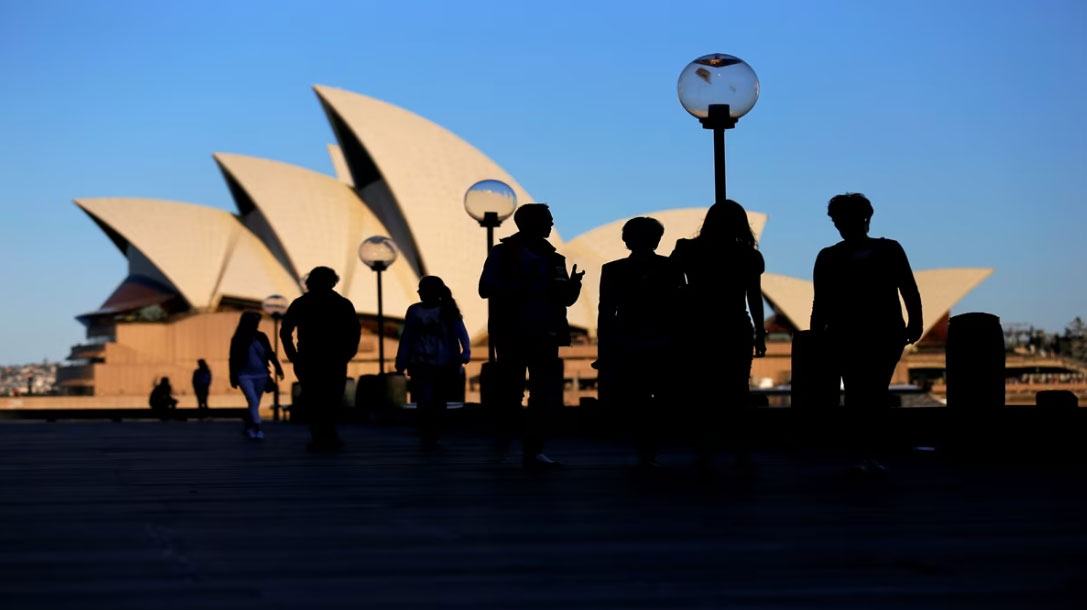
The Australian government issued its long-awaited Migration Strategy on 11 December 2023 and announced “the biggest reforms to migration in a generation.” The review informing the new strategy was led by Dr Martin Parkinson, who concluded that the migration system was “badly broken”. As expected, the reforms will have a profound impact on the AUS$30 billion-per-year international education sector – and will certainly affect the flow of foreign students into the country.
The government has not, as yet, mandated a cap on international student numbers, which will come as a relief to education providers in the country. That said, new policies will exert downward pressure on those numbers by making it more difficult for non-genuine students to obtain study and work visas and by raising the financial requirement for visa applicants by 17% to AUS$24,505.
Other imminent policy changes – including the reduction of some post-study work rights – will lead to fewer international students remaining the country for long periods of time.
Underlying the reforms is a mission to rebuild Australia’s migration system so that it becomes “the nation building engine it once was.” Over the past few years, says the strategy report, the migration system has failed to “identify and attract those people who are best placed to help build the skills base of Australia’s workforce, boost exports and raise living standards.”
“This Strategy is about building back integrity into the system”, added Minister for Home Affairs Clare O’Neil.
Improving integrity of international education a priority
Of the eight “key actions” in the new Migration Strategy, the third is devoted to strengthening the integrity and quality of international education – a commitment targeted for completion by the end of 2024 and consisting of:
“A package of integrity measures to lift the standards for international students and education providers, while ensuring graduates help meet skills shortages and do not become ‘permanently temporary.’”
The measures include:
Supporting many of these measures is the introduction of a Department of Home Affairs’ “student visa integrity unit,” which will receive initial funding of AUS$19 million. “The Government’s Migration Strategy sends a clear message that we will act to prevent the exploitation of students and protect Australia’s reputation as a high-quality international education provider,” said Minister for Education Jason Clare.
Pandemic undermined integrity of system, government finds
The inability of international students to travel to Australia for in-person study when the country’s border was closed for two years during the pandemic exacted a serious financial toll on schools, universities, and VET providers. The dip in international student spending rippled through other related sectors as well. When the border reopened, the government rushed to enact policies designed to bring international students back as quickly as possible.
The policies were effective and international student numbers are now higher than what they were in 2019. But, says the migration report, the post-COVID growth “was partly driven by non-genuine students and unscrupulous education providers subverting aspects of the current regulatory and compliance framework, and pandemic-era visa concessions, such as unrestricted working hours for international students.”
Multi-pronged strategy for discouraging non-genuine students
Stakeholders consulted during the review phase reported a persistent problem of some education providers – notably those in the VET sector – helping non-genuine students to gain access to Australia’s labour market using a student visa. As a result, the new Migration Strategy notes that the government may “use its powers … to issue suspension certificates to high-risk education providers … and will announce changes in the coming months.”
Along with VET providers, the government indicates it will explore increased regulation of agents. More scrutiny of VET providers and agents is expected to “place downward pressure on migration levels as fewer non-genuine students arrive and fewer non-genuine providers recruit students.”
A further measure to discourage non-genuine students will be the new “Genuine Student Test” for all international students that will “incentivise applications from genuine students.”
And as soon as this month, providers judged to be at “higher risk” [of accepting unsuitable students or providing sub-par education/supports] will experience slower visa processing times.
Commitment to reducing “permanent temporariness”
The Parkinson review found that too many students are moving from course to course, and visa to visa, to prolong their stay in Australia without applying for permanent residency. The number of students who obtain more than one student visa while in Australia has “grown by over 30% to more than 150,000 in 2022/23.” Once again, the VET system comes under fire:
“The biggest growth in visa hopping has been in the VET sector, where there is a lower likelihood of credible course progression.”
Built into the new Genuine Student Test will be the requirement for students to prove that any additional course they take while in Australia is taken to complement their degree and upgrade their credentials.
The review also found that “former students are among the largest cohort of ‘permanently temporary’ migrants and that over 50% of Temporary Graduate visa holders are working in low-skilled jobs and not gaining the experience they need to be eligible for permanent residency. It determined that extra time on a post-study work visa does not improve career outcomes and so:
Subclass 485 Temporary Graduate visa limits have been changed:
As a balance to those changes, some students will find it easier, going forward, to obtain permanent residency in Australia:
“Proposed reforms to the points test will also give graduates working in skilled jobs faster pathways to permanent residency.”
And the government will also work with education providers and employers to graduate students with in-demand skills through more integrated learning (e.g., work placements, co-op programmes).
“We welcome further measures to preserve the integrity and strength of the education system while protecting students from unscrupulous operators seeking to exploit them for personal gain,” said Universities Australia Chief Executive Catriona Jackson. “We also applaud the government’s steps to simplify graduate visas to improve the applicant experience and give both graduates and employers more confidence in their ongoing work rights.”
Higher English-language threshold
In early 2024, the government will increase the English-language scores that students will need to meet to obtain Australian visas:





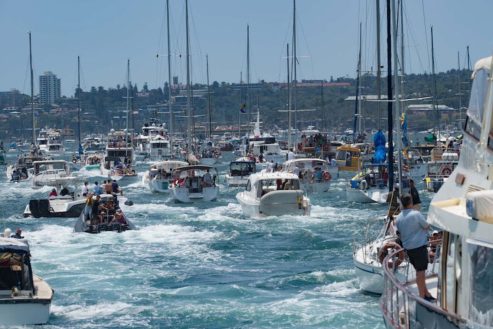

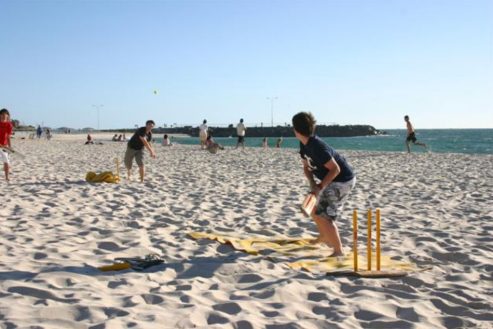
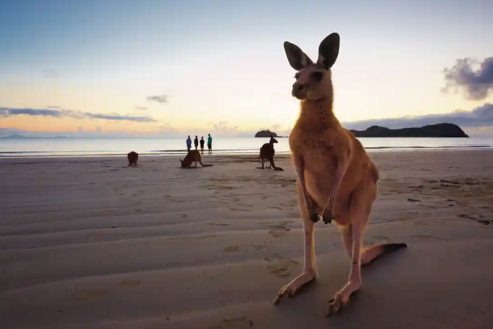
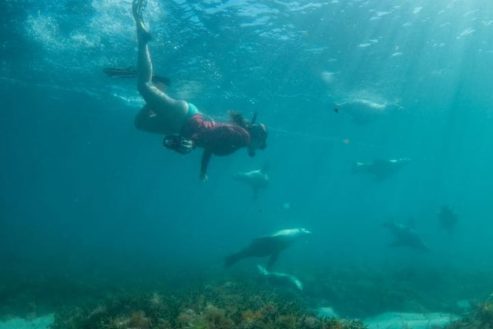


This Bulletin and its contents is for general information purposes only and should not be used as a substitute for consultation with professional advisors.
As legislation and travel requirements are constantly changing, we strongly recommend obtaining advice on your individual situation from a Registered Migration Agent. Please click here to book a consultation with one of our Registered Australian Migration Agents, located in Australia.






You can manage your membership and billing method by clicking here
Terms of Service
Privacy Policy
Copyright © 2025 Office of Immigration Australia, a private company registered in Australia. All Rights Reserved.